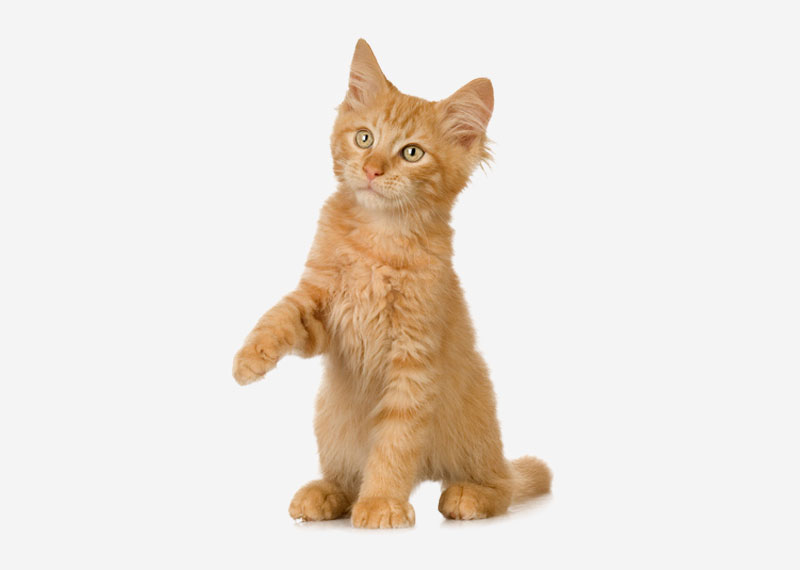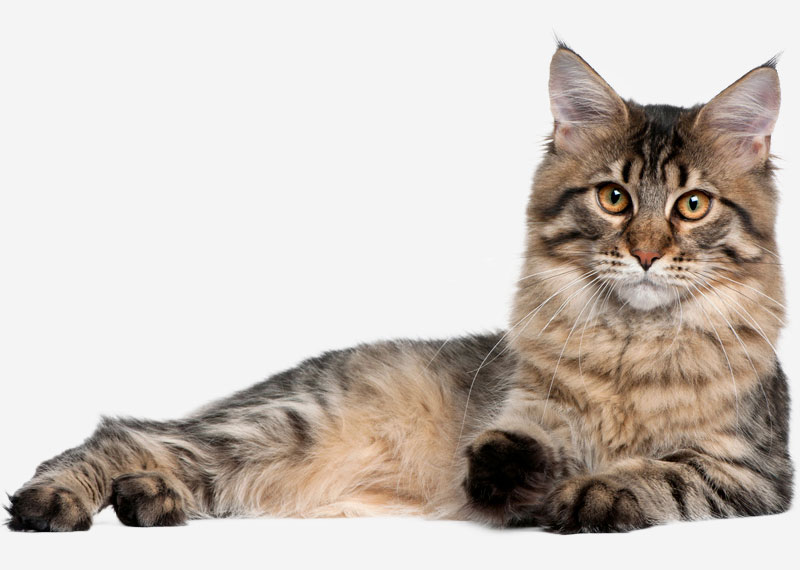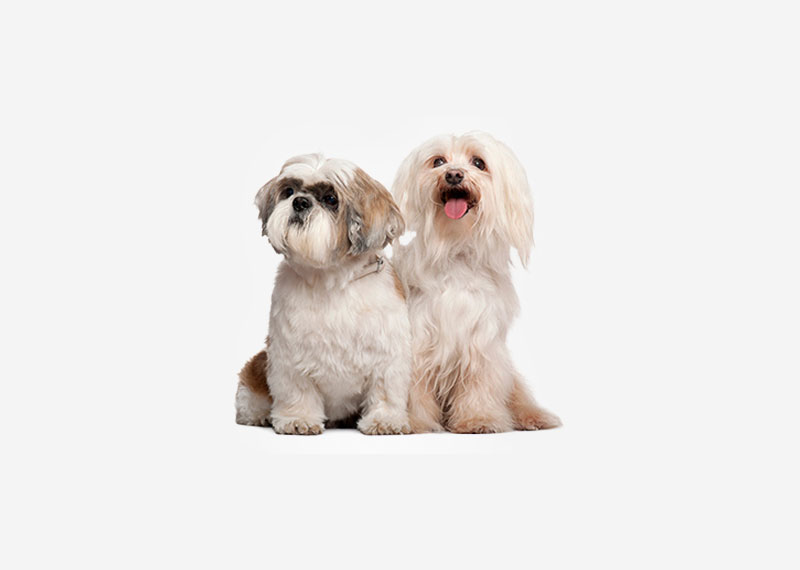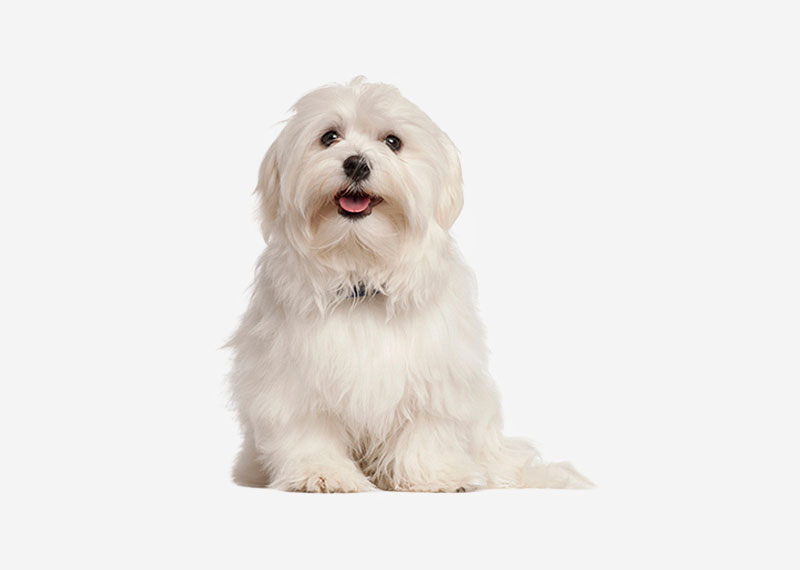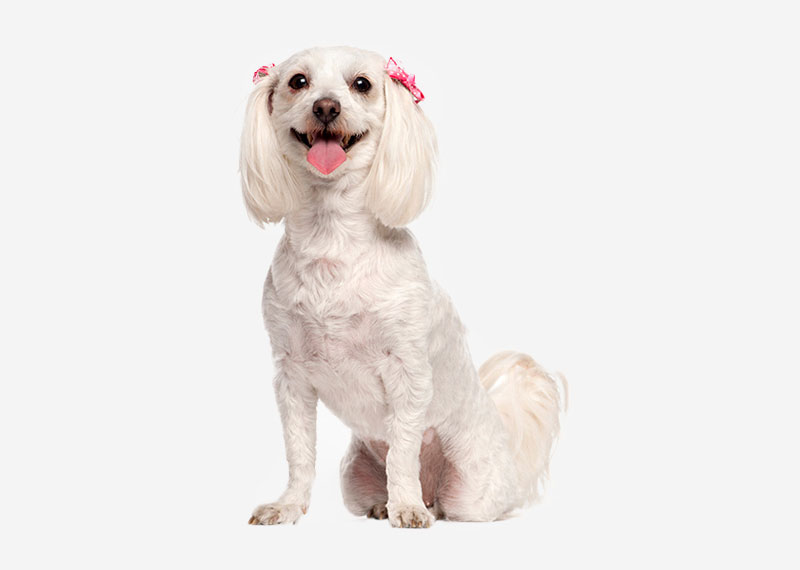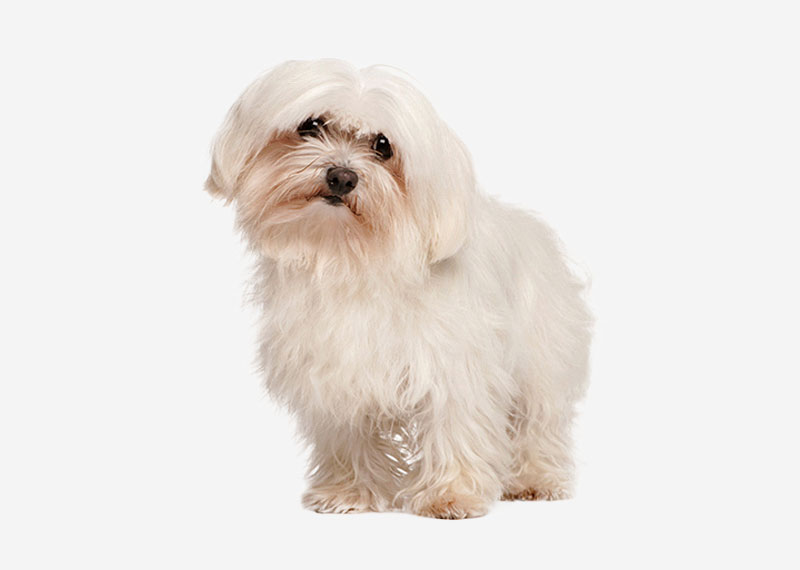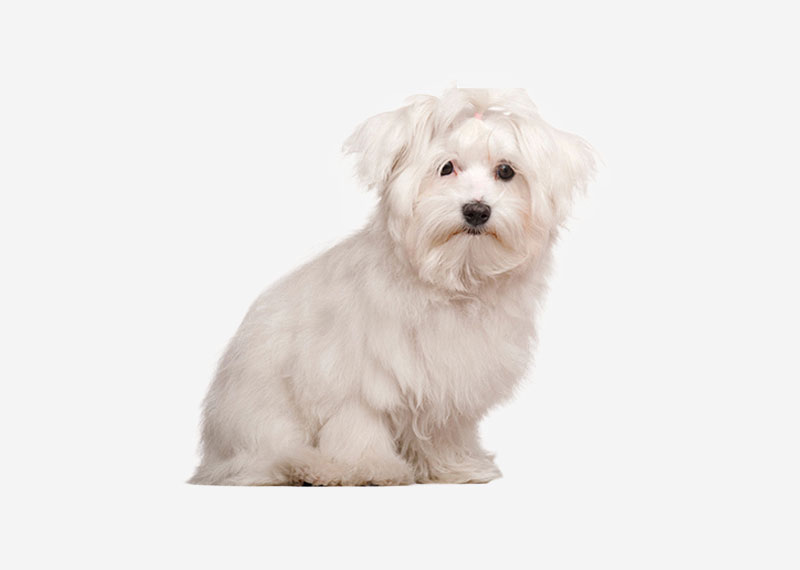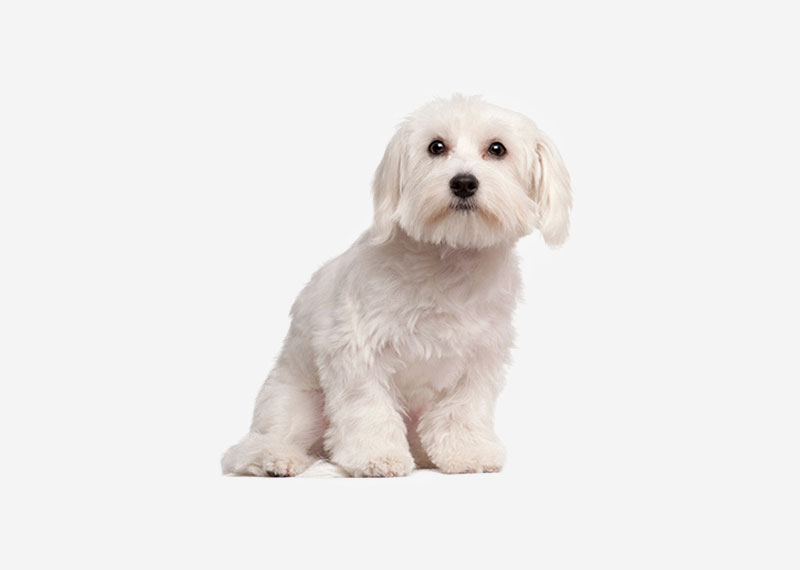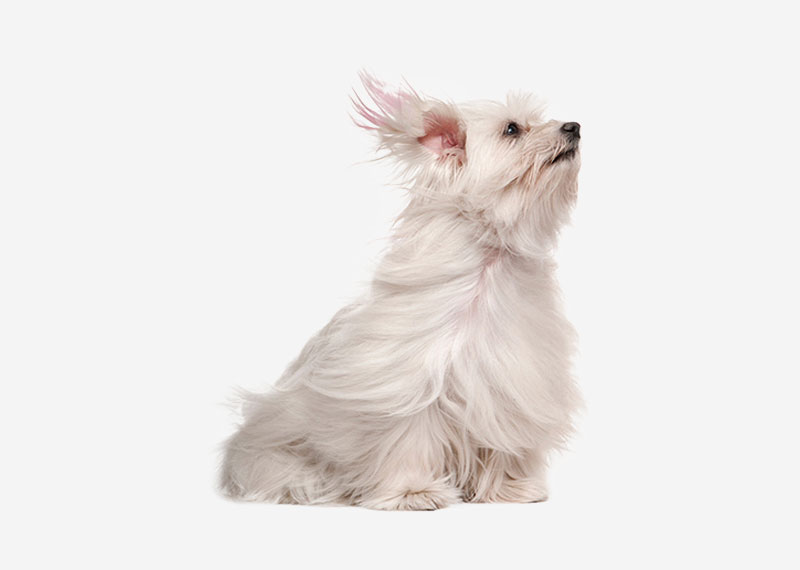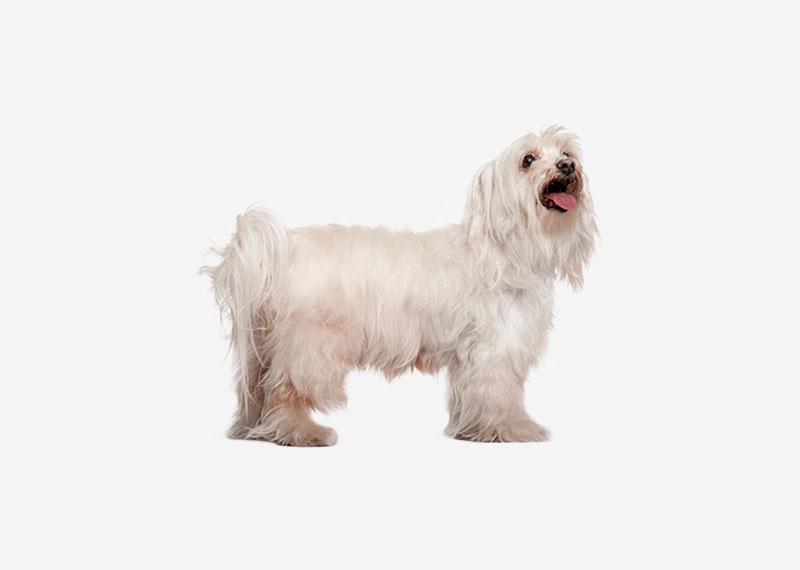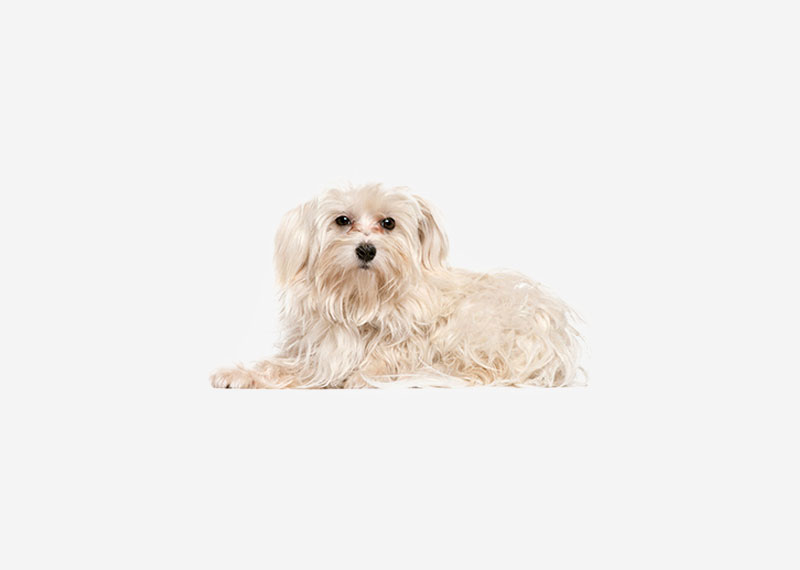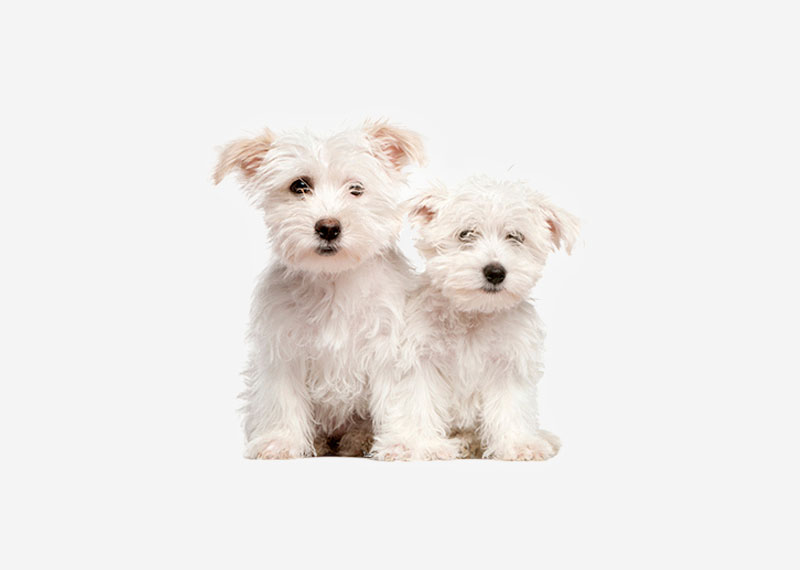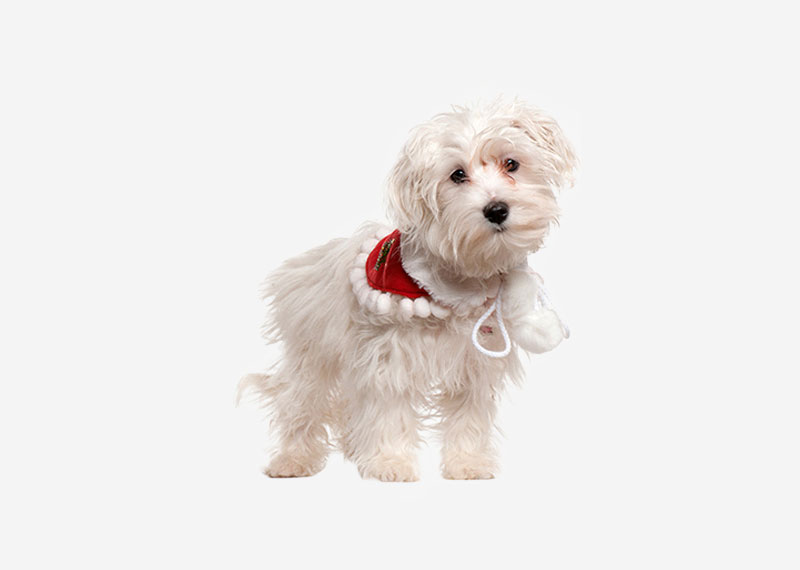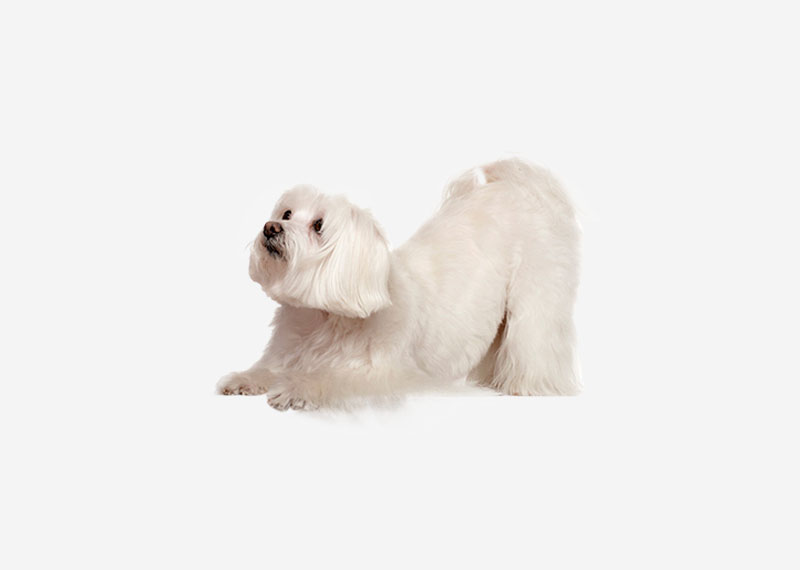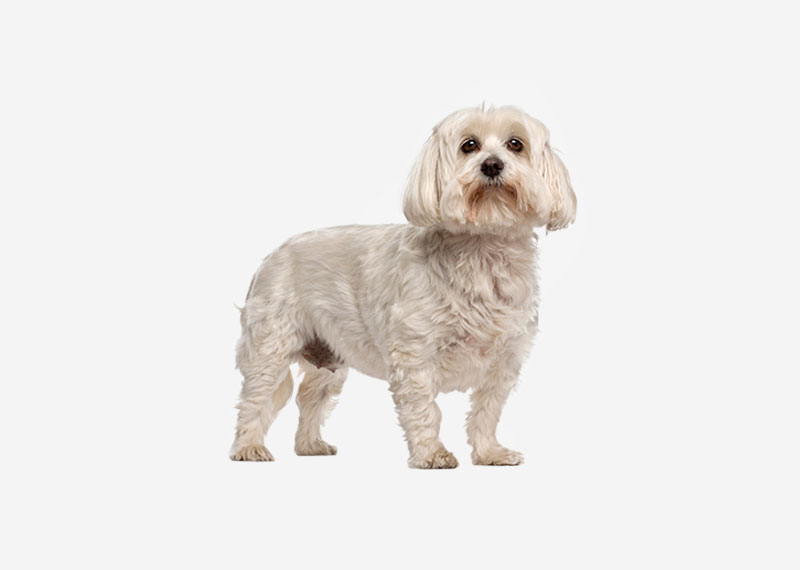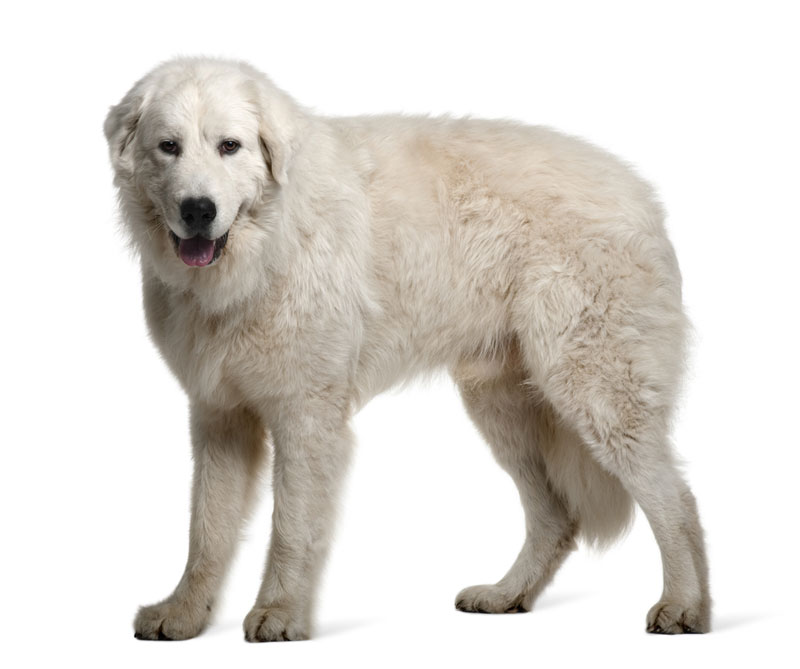Super User
Longhaired Whippet
The Longhaired Whippet is a medium-sized coated sighthound breed that is closely related to short haired whippets.
Löwchen
The Löwchen or Little Lion Dog (German language: Löwchen "little lion", French language: Petit chien lion, "little lion dog ") is a breed of dog. A small dog, they are considered by some registries as a toy dog and by the American Kennel Club as a non-sporting dog. The Löwchen once had the dubious distinction, like the Portuguese Water Dog and the Havanese, of being the rarest dog in the world. In 1973 there were only 65 registered examples of the breed.
The head of the Löwchen is one of its most important features, with its relatively short, wide muzzle, broad skull, lively round eyes, and pendulant ears. They can come in all colours, including brown, that allow for dark eyes and nose. The head, when in proportion to the body, is neither too big nor too small, but helps to emphasize the friendly, regal, and lion personality of the Löwchen. The litter size is usually between three and six puppies. The Löwchen's life span is around 12–14 years.
Lion cut
The Löwchen's long and wavy coat is presented in a lion cut. This means that the haunches, back legs, front legs (except bracelets around the ankles), and the 1/3–1/2 of the tail closest to the body are shaved, and the rest of the coat is left natural to give the dog the appearance of a male lion. The lion cut is the traditional way of presenting these dogs but it is not known where the practice comes from.
Magyar agár
The Magyar agár (MA) is a dog breed. It is a type of sighthound originating in Hungary and Transylvania. It is used for hunting and coursing, and is also kept as a companion.
Naming
Although the Magyar agár is also called the 'Hungarian greyhound' this is a misnomer. The Magyar agár is neither descended from the greyhound nor is not known as a "greyhound" in its country of origin. A more proper alternative name would be Hungarian gazehound or Hungarian sighthound.
History
These dogs probably accompanied the Magyars to the Carpathian Basin and Transylvania in the 10th century. Tradition tells us that the Magyar agár first arrived in northeastern Hungary and the Great Alföld (Hungarian Plain) a little over a thousand years ago. The earliest archeological evidence for the Magyar agárs has been found in the Carpathian Mountains along the northern and eastern border of Hungary. Currently it is not known whether the Magyar agárs existed before the Magyars reached the Carpathian basin.
Although they have lived throughout the Great Alföld, they have had a strong hunting history in the three counties of Szabolcs-Szatmár-Bereg, Hajdú-Bihar and Somogy. The conformation of the Magyar agár has remained the same from the Medieval to the Modern Age until the introduction of the greyhound in the 19th century.
The Magyar agár was bred for long distance racing: dispatching hare or deer shot by horseback riders in an open field or open stand of forest. Hungarians claim that the MA was expected to run along the hunters for distances of 30 kilometres (19 mi) to 50 kilometres (31 mi) per day. Through most of Hungarian history the Magyar agár was not restricted to the nobility, although the MA owned by the nobility were much bigger than the others. "Magyar Agárs owned by the peasants were known as Farm Agárs or simply as Hare Catchers. These smaller versions of the MA are now extinct."
Mahratta Greyhound
The Mahratta Greyhound or Maratha Greyhound is a dog breed originating in India.
Maine Coon
The Maine Coon, also known as American Longhair, is a breed of cat with a distinctive physical appearance and valuable hunting skills. It is one of the oldest natural breeds in North America, specifically Indigenous (ecology) to the state of Maine, where it is the official List of U.S. state mammals.Although the Maine Coon's exact origins and date of introduction to the United States are unknown, many theories have been proposed. The breed was popular in cat shows in the late 19th century, but its existence became threatened when long-haired breeds from overseas were introduced in the early 20th century. The Maine Coon has since made a comeback and is now one of the most popular cat breeds in the world.The Maine Coon is noted for its large bone structure, rectangular body shape, and long, flowing coat. The breed can be seen in a variety of colors and is known for its intelligence and gentle personality. Health problems, such as Hypertrophic cardiomyopathy and hip dysplasia (canine), are seen in the breed, but screening methods can help minimize the frequency of these problems.
History
Origin
The ancestral origins of the Maine Coon are unknown. There are only theories and Folklores. One such folk tale involves Marie Antoinette, the List of Queens and Empresses of France, who was executed in 1793. The story goes that before her death, Antoinette attempted to escape France with the help of Captain Samuel Clough. She loaded Clough's ship with her most prized possessions, including six of her favorite Turkish Angora cats. Although she did not make it to the United States, her pets safely reached the shores of Wiscasset, Maine, Maine, where they bred with other short-haired breeds and developed into the modern breed of the Maine Coon.Another folk tale involves Captain Charles Coon, an English seafarer who kept long-haired cats aboard his ships. Whenever Coon's ship would anchor in New England ports, the felines would exit the ship and mate with the local feral cat population. When long-haired kittens began appearing in the litters of the local cat population, they were referred to as one of "Coon's cats."A myth which is trait-based, though genetically impossible, is the idea that the modern Maine Coon descended from ancestors of semi-feral domestic cats and raccoons. This myth would account for the common color of the breed (Tabby cat) and its bushy tail. Another idea is that the Maine Coon originated between the matings of domestic cats and wild bobcats, which could explain the tufts of hairs that are so commonly seen on the tips of the ears. The connection to the Vikings is seen in the strong resemblance of the Maine Coon to the Norwegian Forest Cat, another breed that is said to be a descendant of cats that traveled with the Vikings.
Cat shows and popularity
The first mention of Maine Coons in a literary work was in 1861, when a black-and-white Maine Coon by the name of Captain Jenks, of the Horse Marines, was written by the co-owner F.R. Pierce, who wrote a chapter about the breed in Frances Simpson's The Book of the Cat (1903) and owned several other Maine Coons. During the late 1860s, farmers located in Maine told stories about their cats and held the "Maine State Champion Coon Cat" contest at the local Skowhegan, Maine Fair.In 1895, a dozen Maine Coons were entered into a show in Boston. On May 8, 1895, the first North American cat show was hosted at Madison Square Garden in New York City. A female Maine Coon brown tabby, named Cosey, was entered into the show. Owned by Mrs. Fred Brown, Cosey won the silver collar and medal and was named Best in Show. The silver collar was purchased by the Cat Fanciers' Association (CFA) Foundation with the help of a donation from the National Capital Cat Show. The collar is housed at the CFA Central Office in the Jean Baker Rose Memorial Library.—by the CFA three times, which led to the formation of the Maine Coon Cat Club in 1973. The breed was finally accepted by the CFA under provisional status on May 1, 1975, and was approved for championship status on May 1, 1976. The next couple of decades saw a rise in popularity of the Maine Coon, with championship victories and an increase in national rankings. In 1985, the state of Maine announced that the breed would be named the official State Cat. Today the Maine Coon is the third most popular cat breed, according to the number of kittens registered with the CFA. The Persian is the first, and the Exotic is the second.
Maltese
The Maltese is a small breed of dog in the Toy Group. It descends from dogs originating in the Central Mediterranean Area. The breed name and origins are generally understood to derive from the Mediterranean island nation of Malta; however, the name is sometimes described with reference to the distinct Adriatic island of Mljet, or a defunct Sicilian town called Melita.
Health
Maltese have no undercoat, and have little to no shedding if cared for properly. Like their relatives, the Poodles and Bichon Frisé, they are considered to be largely hypoallergenic and many people who are allergic to dogs may not be allergic to the Maltese. Daily cleaning is required to prevent the risk of tear-staining. Many owners find that a weekly bath is sufficient for keeping the coat clean, although it is recommended to not wash a dog so often, so washing your Maltese every three weeks is sufficient, although if the dog keeps clean even longer than that. They need to be professionally groomed about once every month and a half.
Regular grooming is also required to prevent the coats of non-shedding dogs from matting. Many owners will keep their Maltese clipped in a "puppy cut", a 1–2 in (2.5–5 cm) all over trim that makes the dog resemble a puppy. Some owners, especially those who show Maltese in the sport of conformation, prefer to wrap the long fur to keep it from matting and breaking off, and then to show the dog with the hair unwrapped combed out to its full length. Some Maltese need to be blow-dried in order to prevent mats because drying is ineffective to some dogs.
Maltese dogs can exhibit signs of tear staining underneath the eyes. Dark staining in the hair around the eyes, "tear staining", can be a problem in this breed, and is mostly a function of how much the individual dog's eyes water and the size of the tear ducts. To get rid of tear staining, a solution or powder can be specially made for tear stains, which can often be found in local pet stores. A fine-toothed metal pet comb, moistened with hot water and applied perhaps twice weekly, also works extremely well. The antibiotic, Cephalexin has been shown to completely clear up "tear staining" in some cases. Maltese are susceptible to "reverse sneezing", which sounds like a honking, snorting, or gagging sound and results often from over-excitement, play, allergies, or upon waking up. It is not life-threatening or dangerous—it will go away after about a minute.
They are ranked 59th out of 69 in Stanley Coren's The Intelligence of Dogs. which indexes obedience and the ability of a dog breed to follow commands, with very light focus on skills seen outside of working breeds, such as emotional intelligence.
Maltese tend to have many or several tooth problems usually resulting in cavities, without proper care the infected teeth may fall out as the dog gets older. Maltese might need additional care, and have their teeth brushed with soft-bristled toothbrush and special dog toothpaste every week to avoid tooth problems.
Manchester Terrier
The Manchester Terrier is a breed of dog of the smooth-haired terrier type.
Manx
The Manx cat (/ˈmæŋks/; Manx language: kayt Manninagh), in earlier times often spelled Manks, is a breed of domestic cat (Felis catus) originating on the Isle of Man, with a naturally occurring mutation that shortens the tail. Many Manx have a small stub of a tail, but Manx cats are best known as being entirely tailless; this is the most distinguishing characteristic of the breed, along with elongated hind legs and a rounded head. Manx cats come in all coat colours and patterns, though all-white specimens are rare, and the coat range of the original stock was more limited. Long-haired variants are sometimes considered a separate breed, the Cymric. Manx are prized as skilled hunters, and thus have often been sought by farmers with rodent problems, and been a preferred ship's cat breed. They are said to be social, tame and active. An old local term for the cats on their home island is stubbin. Manx have been exhibited in cat shows since the 1800s, with the first known breed standard published in 1903.
History
Tailless cats, then called stubbin(apparently both singular and plural) in colloquial Manx language, were known by the early 19th centuryas cats from the Isle of Man (Mann), hence the name, where they remain a substantial but declining percentage of the local cat population. The taillessness arose as a natural mutation on the island,though folklore persists that tailless domestic cats were brought there by sea.They are descended from mainland stock of obscure origin.Like all house cats, including nearby British and Irish populations, they are ultimately descended from the African wildcat (F. silvestris lybica)and not from native European wildcats (F. s. silvestris), of which the island has long been devoid.In the Manx language, the modern name of the breed is kayt Manninagh literally 'cat of Mann' (plural kiyt)or kayt cuttagh lit. 'bob-tailed cat'.Manx itself was often spelled Manks well into the late 1800s.There are numerous folktales about the Manx cat, all of them of "relatively recent origin"as they are focused entirely on the lack of a tail, and are devoid of religious, philosophical, or mythical aspects found in the traditional Irish–Norse folklore of the native Manx culture, and in legends about cats from other parts of the world.
The dominant trait of taillessness arises from a spontaneous mutation, the Manx taillessness gene, that eventually became common on the island because of the limited genetic diversity of island biogeography (an example of the founder effect and, at the sub-specific level, of the species-area curve).
The name of the promontory Spanish Head on the coast of the island is often thought to have arisen from the local tale of a ship of the Spanish Armada foundering in the area, though there is no evidence to suggest this actually occurred.Folklore has further claimed that a tailless cat swam ashore from said shipwreck, to found the established breed.However, tailless cats are not commonly known in Spain, even if such a shipwreck were proven.
Regardless of the genetic and historical reality, there are various fanciful Lamarckian folktales that seek to explain why the Manx has a short to no tail. In one of them, the biblical Noah closed the door of the Ark when it began to rain, and accidentally cut off the tail of the Manx cat who had almost been left behind.Over the years a number of cartoons have appeared on postcards from the Isle of Man showing scenes in which a cat's tail is being run over and severed by a variety of means including a motorcycle, a reference to motorcycle racing being popular on the island,and an update of the Noah story. Because the gene is so dominant and "invades" other breeds when crossed (often without owner knowledge) with the Manx, some have believed that simply being in the proximity of a Manx cat could cause other breeds to somehow produce tailless kittens.
Another genetically impossible account claims that the Manx is the offspring of a cat and a rabbit, purporting to explain why it has no or little tail, long hind legs and a sometimes hopping gait.The cat-rabbit halfbreed tale has been further reinforced by the more widespread "cabbit" folktale.
Populations of tailless cats also exist in a few other places in Europe, most notably Cornwall,only 250 miles (400 km) from Mann, an easy sail. A population on the small, isolated Danish peninsula (former island) of Reersø in the Great Belt may be due to the arrival on the island of shipwrecked cats of Manx origin.Similar cats are also found in Crimea,a near-island Black Sea peninsula, though whether they are genetically related to maritime Manx cats or are a coincidentally similar result of insular genetic diversity limitations, like the unrelated Kuril Islands Bobtail, Karelian Bobtail and Japanese Bobtail, is unknown. The Manx gene may be related to the similarly dominant tail suppression gene of the recent American Bobtail breed, but Manx, Japanese Bobtails and other short-tailed cats are not used in its breeding program, and the mutation seems to have appeared in the breed spontaneously.Possible relation to the Pixie-bob breed, which also ranges from rumpy to fully tailed, is unknown.
Health
The Manx taillessness gene is dominant and highly penetrant; kittens from two Manx parents are generally born without any tail. Being homozygous for (having two copies of) the gene is usually lethal in utero, resulting in miscarriage.Thus, tailless cats can carry only one copy of the gene. Because of the danger of having two copies of the taillessness gene, breeders avoid breeding two entirely tailless Manx cats together.Because neither parent carries the tailless allele, a tailed Manx bred to a tailed Manx results in all tailed kittens. Breeders have reported all tail lengths in the same litter, and there is no accurate means to predict the ratio of tailed to tailless kittens produced in each litter.
Some partial tails are prone to a form of arthritis that causes the cat severe pain,and in rare cases Manx-bred kittens are born with kinked short tails because of incomplete growth of the tail during development; kittens with stumpy to long tails have sometimes been docked at birth as a preventative measure.
"Manx syndrome" or "Manxness" is a colloquial name given to the condition which results when the tailless gene shortens the spine too much. It can seriously damage the spinal cord and the nerves causing a form of spina bifida as well as problems with the bowels, bladder, and digestion. Very small bladders are indicative of the disease and it is often difficult to diagnose. Death can occur quite suddenly and some live for only 3–4 years; the oldest recorded was 5 years when affected with the disease. In one study it was shown to affect about 30% of Manx cats, but nearly all of those cases were rumpies, which exhibit the most extreme phenotype.Such problems can be avoided by breeding rumpy Manx cats with stumpy specimens and this breeding practice is responsible for a decline in spinal problems among modern, professionally bred Manx cats today.Most pedigreed cats are not placed until four months of age (to make sure that they are properly socialised) and this usually also gives adequate time for any such health problems to be identified.Renowned feline expert Roger Tabor has stated: "Only the fact that the Manx is a historic breed stops us being as critical of this dangerous gene as of other more recent selected abnormalities."The breed is also predisposed to rump fold intertrigo and corneal dystrophy.
Some tailless cats such as the Manx cats may develop megacolon which is a recurring condition causing constipation that can be life-threatening to the cat if not properly monitored. It is a condition in which, due to absence of a tail, the smooth muscle that normally contracts to push stools toward the rectum loses its ability to do so.
In popular culture
Isle of Man national symbol
The Isle of Man uses the Manx cat as one of the symbols of the island nation and its unique culture. On Isle of Man currency, Manx cats are the subject of the reverse of three special commemorative crown coins. The first two, issued in 1970 and 1975, are stand-alone releases in both copper-nickel and silver proofs, while the third in 1988 inaugurated an ongoing series of annual cat coin issues that have also been produced in gold in various sizes; an almost-hidden Manx cat appears in the background on each of the 1989-onward releases featuring other breeds.A Manx cat also appears on the island's 1980–83 penny. The breed figures on numerous Isle of Man postage stamps, including a 2011 series of 6 that reproduce the art from Victorian era Manx cat postcards,a 1996 one-stamp decorative sheetlet, one stamp in a 1994 tourism 10-stamp booklet, a 1996 five-stamp series of Manx cats around the world, and a 1989 set of the breed in various coat patterns, plus two high-value definitives of 1983 and 1989. The cat appears prominently as the subject of a large number of tourist goods and Manx pride items available on the island and over the Internet, serving (along with the triskelion) as an emblem of the Isle of Man.
Famous real-world Manx cats
- Koko, a gorilla renowned for communicating in rudimentary American Sign Language, has had three Manx (All Ball, Lipstick and Smokey) as companion animals.
- Bob, the subject of Bob the Preschool Cat: A Biography of an Urban Manx Cat by E. Romayne Hertweck (2009, ISBN 978-1-4327-3555-5)
Fictional Manx cats
- Bluebeard, from the German animated film Felidae (1994)
- Gordon from the American animated TV series Catscratch (2005–2007)
- Ma Manx, matriarch of a crime gang in the children's novel Rex Tabby: Cat Detective by Daniel Kirk (2004, ISBN 978-0-439-45286-1)
- Mac Manc McManx, a recurring guest character in the American daily comic strip Get Fuzzy (1999–present)
- Mayor Manx from the American animated TV series SWAT Kats (1993–1995)
- Manx, the antagonist to Slimer, of Slimer! and the Real Ghostbusters (1988–1991)
- Manx Cat, the antagonist for the bulk of Paul Gallico's children's novel Manxmouse: The Mouse Who Knew No Fear (1968, ISBN 978-0-698-10237-8) and the 1979 Japanese anime based on it
- Manx McCatty from Christopher Reed's children's book The Big Scratch (1988, ISBN 978-0-345-35391-7)
- Marco the Manx from Joann Roe's series of children's books, Fisherman Cat (1988, ISBN 978-0-931551-02-4), Castaway Cat (1989, ISBN 978-0-931551-03-1), Alaska Cat (1990, ISBN 978-0-931551-05-5) and Samurai Cat (1993, ISBN 978-0-931551-08-6)
- Max from Adam Whitmore's "Max the Cat" 1986 series of children's books, Max Leaves Home (ISBN 978-0-382-09243-5), Max in America (ISBN 978-0-382-09244-2), Max in India (ISBN 978-0-382-09245-9) and Max in Australia (ISBN 978-0-382-09246-6)
- Mika, title character of the children's book Mika the Manx Cat by D. M. Hart (2012, ISBN 978-0-61567-18-95)
- Narrator, an orange Manx, in the children's book The Cats of Grand Central by Laura Archibald, illustrated by Garner Beckett (2003, ISBN 978-0-9730951-0-4)
- Olaf, protagonist of Olaf Comes Home by Kathy Dollina Creamer (2001, ISBN 978-1-873120-15-6), a children's book modeled on "The Ugly Duckling"
- Raffles, Bernie Rhodenbarr's Manx cat in Lawrence Block's "Burglar" series of mystery novels, first appearing in The Burglar Who Traded Ted Williams (1994, ISBN 978-0-525-93807-1)
- Stimpson "Stimpy" J. Cat, one of the two main characters of the American animated TV series The Ren and Stimpy Show (1991–1996)
- Tiara Boobowski was planned to be a Manx cat character in Sonic the Hedgehog game Sonic X-Treme but the game was cancelled.
Other
The Norton Manx motorcycle line (1947–1962, Norton Motors Ltd.), though ostensibly named after the Isle of Man TT road race (which the brand dominated for decades, until the 1970s), was long promoted with Manx cat badges, in the forms of both enameled metal pins and sew-on patches. The Manx Norton has experienced a major revival among modern enthusiasts of classic motorcycle racing.
The Meyers Manx (1964–1971, B. F. Meyers & Co.) is the original (much-copied), iconic Volkswagen Beetle-based dune buggy, and broke desert racing records shortly after its introduction. It was named after the cat, due to its design – short-bodied, tall-wheeled, and manoeuvrable. The original designer has revived and updated it as the "Manxter" (2000–present, Meyers Manx, Inc.).
A popular flying model aircraft of the late 1950s was the Manx Cat, sold in kit form in various versions. The biplane model was profiled in hobbyist magazines, like the February 1957 Flying Models and October 1958 American Modeler, and remains a sought-after collectors' item in online auctions.
A Grimjack comic book story, The Manx Cat, was serialised as a Comicmix.com webcomic in January 2011, and has since seen print as a six-issue miniseries by IDW Comics. The story involves "The Manx Cat", a statuette of such a cat that at first seems to be a simple MacGuffin like the classic Maltese Falcon of novel and films of that name, but which begins showing malevolent powers. The plot thickens with time travel, reincarnation, and Cthulhu Mythos-style "elder gods". Like most modern comics, it features digitally-created art.
Maremma Sheepdog
The Maremma Sheepdog, in Italian Cane da pastore Maremmano-Abruzzese, usually referred to as just Maremmano, is a breed of livestock guardian dog indigenous to central Italy, particularly to Abruzzo and the Maremma region of Tuscany and Lazio. It has been used for centuries by Italian shepherds to guard sheep from Gray wolf. The literal English translation of the name is "The dog of the shepherds of the Maremma and Abruzzese region". The English name of the breed derives from that of the Maremma marshlands, where until recently shepherds, dogs and hundreds of thousands of sheep over-wintered, and where the breed is today abundant although sheep-farming has decreased substantially. The breed is widely employed in Abruzzo, where Shepherd remains vital to the rural economy and the wolf remains an active and protected predator. Similar breeds include the Pyrenean Mountain Dog, the Kuvasz of Hungary, the Polish Tatra Sheepdog of Poland and the Šarplaninac (although not white), with all of which it may share a common ancestor; and the Akbash Dog of Turkey. See Mountain dog breeds.
History
Ancient history and iconography
Descriptions of white sheep defense dogs are found in ancient Roman literature, in works such as those of Columella, Varro and Rutilius Taurus Aemilianus Palladius. Similar dogs are depicted in numerous sculptures and paintings from Roman times to the present. Among the earliest is the series of large statues (two in Rome, one in Florence, one – the Duncombe Dog – in England) copied from a Hellenistic bronze from Pergamon. Wolf dogs from the Abruzzo were imported into France at about this time. They were used by François Antoine, "Antoine de Beauterne", in his successful hunt for the Beast of Gévaudan in 1765; The dogs work in groups; three or four dogs are an adequate defense against wolves and stray dogs. Their function is mostly one of dissuasion, actual physical combat with the predator being relatively rare. Some ranchers have found success training Maremmas to protect free-range fowl like chickens from predation from both ground threats such as coyotes, stray dogs and foxes as well as aerial threats such as raptors (hawks, eagles, owls, etc.).Recently in Warrnambool, Australia, the world's first trial utilized a Maremma to guard the dwindling Little Penguin population of Middle Island (Warrnambool). This project won the 2010 Australian Government Coastcare Award. While using Maremma to guard an endangered species is rare, Maremma along with other breeds of livestock guarding dogs are appreciated by environmentalists because they make it possible for livestock to coexist with predators such as wolves and coyotes, reducing their predation by 70% to 80% or more.}}
McNab
The McNab Shepherd—also called a McNab Sheepdog, McNab Border Collie, or McNab Herding Dog—is a breed of dog whose focus is on herding. It originated from a smooth-coated dog typically reported to be the Scotch Collie or Fox Collie, which was also the ancestor of the Border Collie.




















